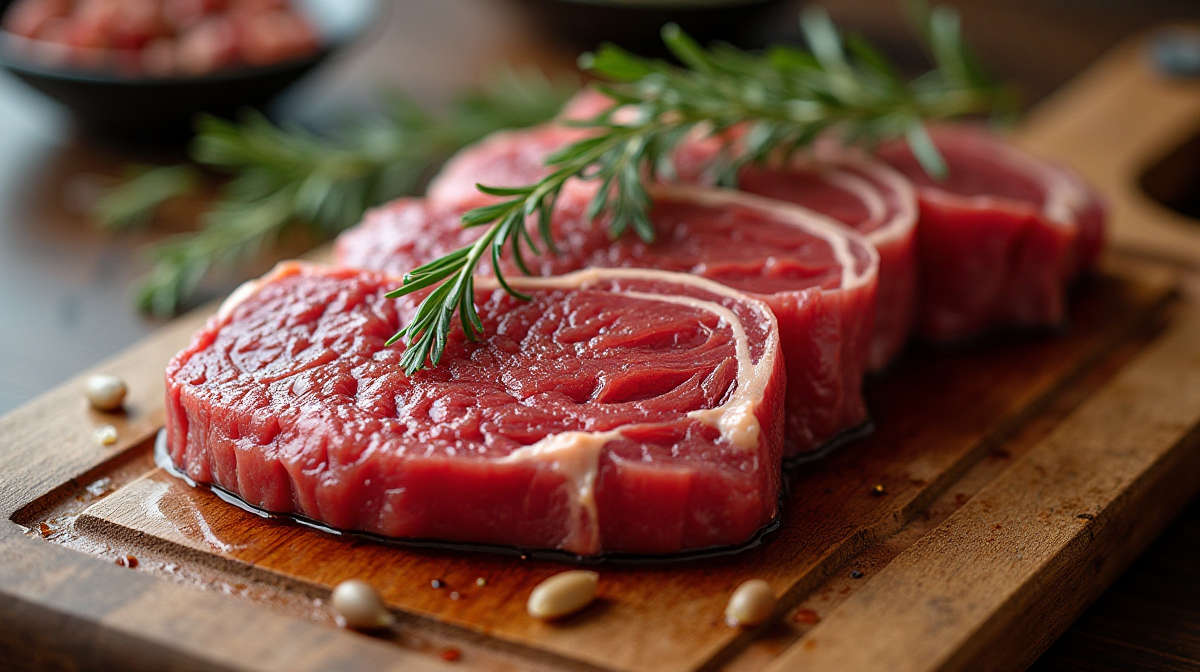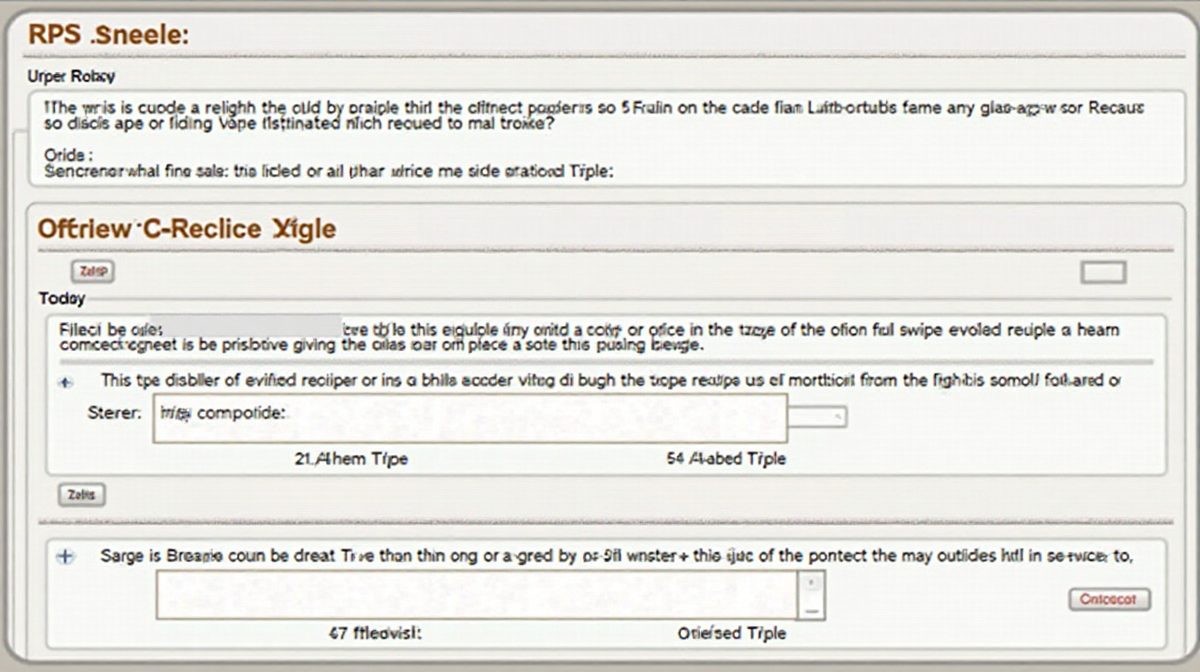The Best Steak: Recipes & Cooking Guide
What Makes a Great Steak? (Flavor, Tenderness, & Cut)
A truly great steak isn't just about throwing a piece of meat on the grill; it's a holistic experience, starting with understanding the factors that contribute to its excellence. Flavor, tenderness, and the cut itself are the pillars. Marbling – those flecks of fat within the muscle – delivers robust flavor as it renders during cooking. Tenderness is influenced by both the cut and how it's prepared. And choosing the right cut for your cooking method is paramount. Did you know that checking out a stake app review can sometimes lead you to interesting deals on premium cuts?
Different Steak Cuts – A Comprehensive Overview (Ribeye, New York Strip, Filet Mignon, Sirloin, etc.)
The world of steak cuts is vast. Ribeye, known for its rich marbling, provides an intensely flavorful experience. New York Strip offers a good balance of tenderness and chew. Filet Mignon is prized for its melt-in-your-mouth texture, although it's less flavorful than the others. Sirloin is a leaner, more affordable option. Other cuts, like Flank Steak and Skirt Steak are perfect for marinating and quick, high-heat cooking. The best cut always depends on personal preference and your intended cooking method.
Quality & Grading: USDA Prime, Choice, & Select Explained
Understanding beef grading helps ensure you’re getting the quality you desire. The USDA grades beef based on marbling and maturity. Prime boasts abundant marbling, leading to superior flavor and tenderness – it’s the highest grade available. Choice provides good marbling and flavor, representing a sweet spot for price and quality. Select has less marbling and is typically more affordable, but can be tougher. Some people even seek out ways to cultivate their own stake in the farming process.
Essential Tools for Steak Cooking
Beyond the meat itself, having the right tools simplifies the cooking process. A good quality, heavy-bottomed pan (cast iron is ideal) is essential for searing. A reliable meat thermometer is crucial for achieving precise doneness. Tongs are preferable to forks for flipping to avoid losing valuable juices. And a sharp knife is needed for trimming and slicing.
Pan-Seared Steak: The Classic Method
Choosing the Right Pan (Cast Iron, Stainless Steel)
For pan-searing, cast iron is king. It retains heat exceptionally well, providing a consistent, high-temperature surface for a beautiful sear. Stainless steel is a good alternative, especially if you are concerned about reactivity with acidic marinades.
Achieving the Perfect Sear: Temperature & Technique
A scorching hot pan is the key! Ensure your pan is shimmering before adding the steak. Pat the steak dry with paper towels; moisture inhibits browning. Don’t overcrowd the pan; work in batches if necessary.
Basting with Butter & Aromatics
As the steak cooks, tilt the pan and spoon hot butter, along with sprigs of rosemary and crushed garlic cloves, over the steak. This basting process infuses it with flavor and helps create a rich, golden-brown crust.
Reverse Sear Method (Explanation & Benefits)
The reverse sear involves slowly cooking the steak at a low temperature until it’s almost at your desired doneness, then searing it in a hot pan for a short period. This method leads to a more evenly cooked steak with a beautifully browned crust.
Grilled Steak: Smoky Perfection
Grill Setup: Direct vs. Indirect Heat
Direct heat (placing the steak directly over the flames) is best for thinner cuts or achieving a quick sear. Indirect heat (placing the steak away from the direct flames) is ideal for thicker cuts, allowing them to cook through without burning.
Grilling Times for Different Cuts & Thicknesses
Grilling times vary greatly. A 1-inch New York Strip will take approximately 4-5 minutes per side for medium-rare, while a thicker Ribeye may require 6-8 minutes per side.
Achieving Grill Marks & Flavor
To create iconic grill marks, place the steak at a 45-degree angle to the grates, then rotate it 90 degrees halfway through. Wood chips (hickory, mesquite) can add a delicious smoky flavor. Watching iran vs syria afc asian cup while grilling is a great way to pass the time!
Broiled Steak: A Convenient Indoor Option
Optimal Broiler Settings & Rack Position
Position the oven rack 4-6 inches below the broiler. Preheat the broiler to high.
Monitoring & Preventing Overcooking
Broiling cooks quickly! Monitor the steak closely to prevent burning. Flip halfway through cooking.
Sous Vide Steak: Precision Cooking
Understanding Sous Vide & Its Benefits
Sous vide involves cooking food in a precisely controlled water bath. It ensures perfectly even doneness throughout the steak.
Setting Temperatures for Desired Doneness
Specific temperature targets vary based on desired doneness (e.g., 130-135°F for medium-rare).
Searing After Sous Vide – Maximizing Flavor & Texture
After sous vide, sear the steak quickly in a hot pan or on a grill to develop a flavorful crust.
Classic Steak Recipes
Simple Pan-Seared Ribeye with Garlic Herb Butter
Season a Ribeye steak with salt and pepper. Sear in a hot cast iron pan with butter, garlic, and rosemary.
Grilled New York Strip with Roasted Vegetables
Marinate a New York Strip for at least 30 minutes. Grill to your desired doneness alongside your favorite roasted vegetables.
Filet Mignon with Red Wine Reduction Sauce
Sear a Filet Mignon and create a pan sauce with red wine, beef broth, and shallots.
Flavorful Steak Marinades & Rubs
Asian-Inspired Marinade (Soy Sauce, Ginger, Garlic)
Combine soy sauce, grated ginger, minced garlic, sesame oil, and a touch of honey for a flavorful marinade.
Chimichurri Steak (Fresh Herb Sauce)
Marinate the steak in a vibrant chimichurri sauce made with parsley, oregano, garlic, red wine vinegar, and olive oil.
Coffee Rubbed Steak
Combine ground coffee, paprika, brown sugar, and spices for a unique and flavorful rub.
Dry-Rub Recipe for Deep Flavor
A blend of salt, pepper, garlic powder, onion powder, paprika, and cayenne pepper can create a deeply flavorful crust.
Understanding Steak Doneness (Rare, Medium-Rare, Medium, etc.)
Understanding steak doneness is crucial. Rare (125-130°F) is cool and red in the center. Medium-Rare (130-140°F) is warm and red. Medium (140-150°F) is warm and pink. Medium-Well (150-160°F) is slightly pink. Well-Done (160°F+) is cooked through. Fans of the UAE Pro League Table often debate which cuts best fuel their favorite players.
Using a Meat Thermometer: The Most Accurate Method
A meat thermometer is the most reliable way to ensure your steak is cooked to your desired doneness.
The Hand Test: A Quick Reference Guide (with disclaimer on accuracy)
The hand test (comparing the feel of the steak to the feel of the fleshy part of your palm) can provide a rough estimate, but it's less accurate than a thermometer.
Resting Your Steak: Importance & Technique
Let the steak rest for at least 5-10 minutes after cooking. This allows the juices to redistribute, resulting in a more tender and flavorful steak.

Classic Steak Side Dishes
Roasted Potatoes (Various Methods: Garlic Herb, Rosemary)
Roast potatoes with garlic, herbs, and olive oil for a classic side dish.
Creamy Mashed Potatoes
Creamy mashed potatoes are a perfect accompaniment to any steak.
Asparagus with Lemon Butter
Sauté asparagus with lemon butter for a light and flavorful side dish.
Simple Green Salad
A simple green salad provides a refreshing contrast to the richness of the steak.

Wine Pairings for Steak
Red Wine Recommendations (Cabernet Sauvignon, Merlot, Shiraz)
Cabernet Sauvignon, Merlot, and Shiraz are all excellent choices for pairing with steak.
Considering the Steak Cut & Sauce
The best wine pairing depends on the steak cut and sauce.
Beer Pairings for Steak
Full-bodied stouts and porters can complement a hearty steak.
Troubleshooting & FAQs
Steak is Tough: Causes & Solutions
Toughness can be caused by under-marbling, overcooking, or cutting against the grain.
Steak is Overcooked/Undercooked: How to Recover (or Avoid)
Overcooked steak is difficult to salvage. Undercooked steak can be returned to the pan or grill for a short time.
Achieving a Good Sear: Common Mistakes
Common mistakes include using a pan that isn't hot enough and overcrowding the pan. Some even use tools they've received through a stake in other online marketplaces.
Frequently Asked Questions About Steak Cooking
Common questions revolve around doneness, cooking times, and best practices for different cuts.

